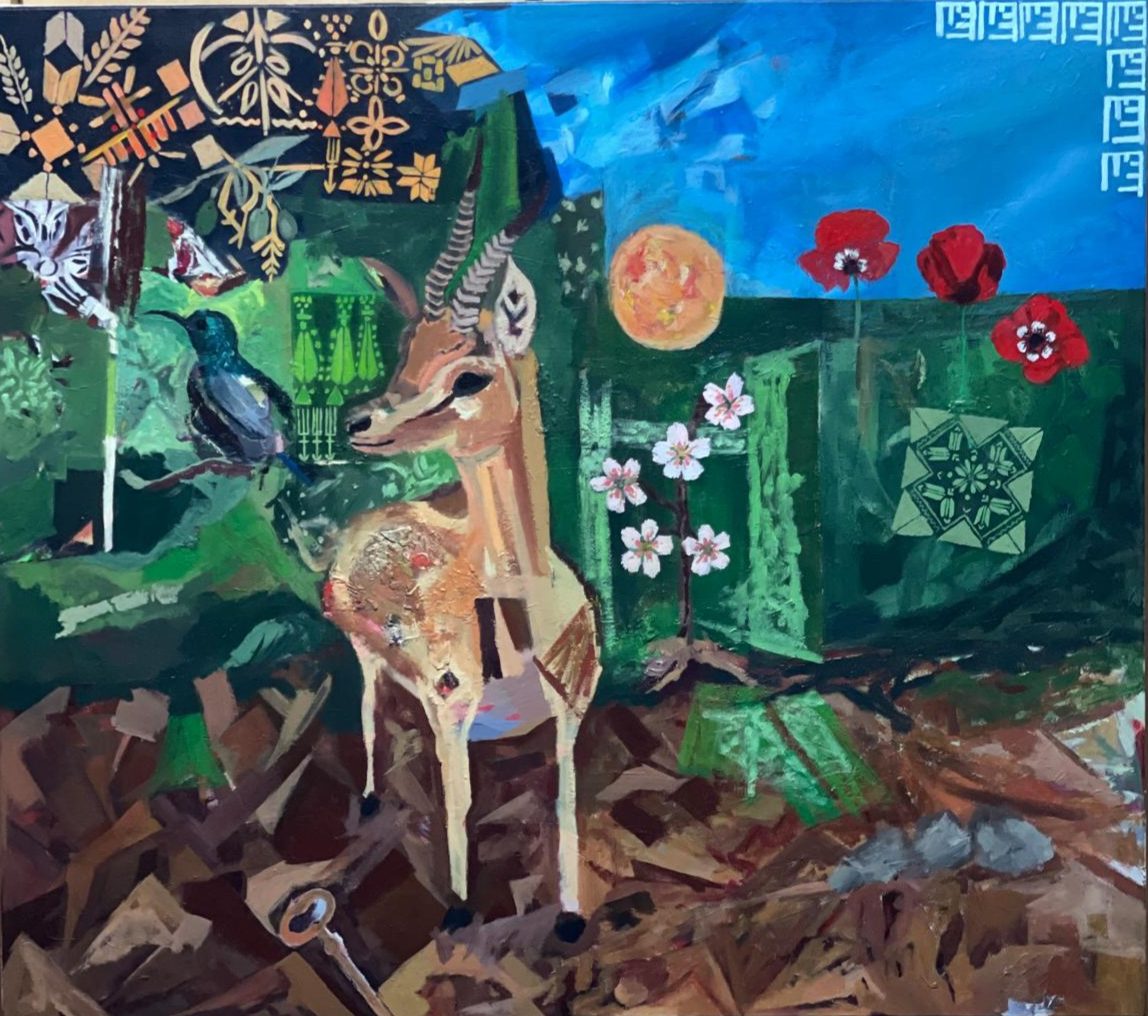Practical Kinship: Welcoming Mazin Qumsiyeh & Jonathan Frazer
As I Stand Beside continues to grow, so too does the diversity of those stepping forward. Some do so with poems and puppets, others through research or peaceful protest. And some, like the two Early Adopters we’re celebrating today, bring deep scientific commitment and a steady sense of responsibility to their chosen beings. We’re delighted […]
As I Stand Beside continues to grow, so too does the diversity of those stepping forward. Some do so with poems and puppets, others through research or peaceful protest. And some, like the two Early Adopters we’re celebrating today, bring deep scientific commitment and a steady sense of responsibility to their chosen beings.
We’re delighted to welcome Mazin Qumsiyeh and Jonathan Frazer, whose work—though very different in form—shares a common thread: clear-eyed, grounded care.
Mazin Qumsiyeh — Standing Beside the Mountain Gazelle
Mazin is a Palestinian ecologist, educator, and founder of the Palestine Institute for Biodiversity and Sustainability. He has spent decades cultivating both a scientific and cultural approach to protecting the unique ecosystems of the Eastern Mediterranean.
The mountain gazelle—graceful, alert, and endangered—has become a focal point of his work. These animals are not only ecologically significant but culturally resonant, long present in stories, art, and memory across the region. By standing beside them, Mazin is also standing for a way of life in which biodiversity, heritage, and justice are inseparable.
Through ecological fieldwork, education, and tireless community engagement, he is helping to ensure that the gazelle’s habitat is studied, restored, and—most importantly—loved.
Jonathan Frazer — Standing Beside the Iberian Lynx
Jonathan is a physicist by training, currently leading a research group in genomics at the Centre for Genomic Regulation in Barcelona. His academic path has moved from theoretical physics to biology and computational genetics, but always with one underlying question: how do complex systems adapt, survive, and become?
The Iberian lynx—once one of the most endangered large cats in the world—captured his imagination as both a biological marvel and a case study in recovery. Jonathan’s decision to stand beside the lynx is rooted in what he calls epistemic proximity—a sense of responsibility that emerges from knowing something well, and understanding its fragility.
He isn’t tracking lynx in the field. But through his work on evolutionary processes, and his belief in rigorous, careful science as a form of stewardship, he reminds us that conservation doesn’t always start with mud on your boots. Sometimes it starts in the lab, or the code, or a question that won’t let you go.
Standing beside can look like many things. In Mazin’s case, it’s walking a landscape and bringing others with him. In Jonathan’s, it’s staring into the structures of DNA and asking what survival really means.
Both remind us that the work of protecting life—whether animal, ecological, or relational—needs as many entry points as there are people who care.
If you’re already standing beside a species through your research, teaching, art, conservation work, peaceful activism or data, we’d love you to join us. A movement needs not only voices and visions—but also maps, field notes, peer review, and long, quiet hours of attention.
Welcome, Mazin and Jonathan!
